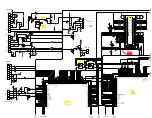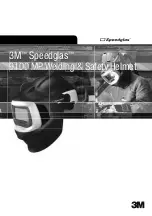
109818-100 Rev 05
Page 2
Effective 6/99
MOUNTING LOCATION AND SETUP
Mount the source and detector units so they are aimed directly
at each other from opposite sides of the target. (The detector
should be on the dirtier side because the light scattering effect
of dirt collecting on the lens is less significant if it takes place
at the detector.) Ensure that the area of the target to be
detected will block the entire effective beam (see illustration at
right). Apply power to both units.
Accurate sensing depends on proper alignment of the source
and detector. To begin, the source and detector must be
positioned in rough alignment so that source light is received
by the detector (check by placing a solid object in front of the
source beam—the output indicator on the detector will change
when the object blocks the beam, and change back when the
object is removed). If the output indicator does not change,
follow one or both of these two rough alignment methods:
1. The source emits visible red light. Look at the source with
your eye positioned close to the detector. Mount the detector
in the area where the source light is brightest.
2. Place a retroreflector over the lens of the detector. Look at
the detector with your eye positioned close to the source.
Mount the source in the area where the light reflected from
the retroreflector is the brightest.
The detector must be placed within
the source beam pattern
(the area containing all
the light rays emitted
by the source).
The source must be placed
within the detector field of
view for the detection
system to operate.
Only the light
source rays that
travel in a straight
line to the receiver
(the diameter of the lens)
will be detected. An object
must fully block this beam
in order to be detected.
Working
Range
Effective
Beam Diameter
(Detection Zone)
Detector
Field
of View
Source
Beam
Pattern
Source
Detector
Lt/Dk
Gain
Sensor Type
A
B
C
D
Adjust
Adjust
11100A
2.20
0.65
0.25
n/a
No
No
11102A
2.75
0.65
1.10
n/a
No
No
12100A
2.20
0.65
0.25
n/a
Yes
Yes
12102A
2.60
0.65
0.25
n/a
Yes
Yes
11100R
2.55
0.65
0.60
0.20
No
No
12100R
2.55
0.65
0.60
0.20
Yes
Yes
APPROXIMATE DIMENSIONS (Shown in inches except where noted)
Light/Dark
Adjustment
Gain
Adjustment
LED
0.47
M 18 x 1.0 Thread (mm)
(fits into a 0.75 inch hole)
"D"
"A"
1.00
"B"
0.32
0.11
"C"
Cable
length*
1.69
0.56
Micro Connector
(quick-disconnect
versions only)
*
0.125 Diameter
Thru Holes (2 places) Use
#4 Hardware Only
Quick-disconnect versions: 7 ±1 inch
Cable versions: 6 feet
Obtain final alignment by moving the detector back and forth in
the horizontal axis to find the extreme positions where the
output indicator on the detector goes “off” (for dark operate
models, or “on” for light operate models). Position the detector
midway between the two extremes. Repeat this procedure for
the vertical axis, then tighten the source in place. Now repeat
the final alignment procedure for the source.
10






















